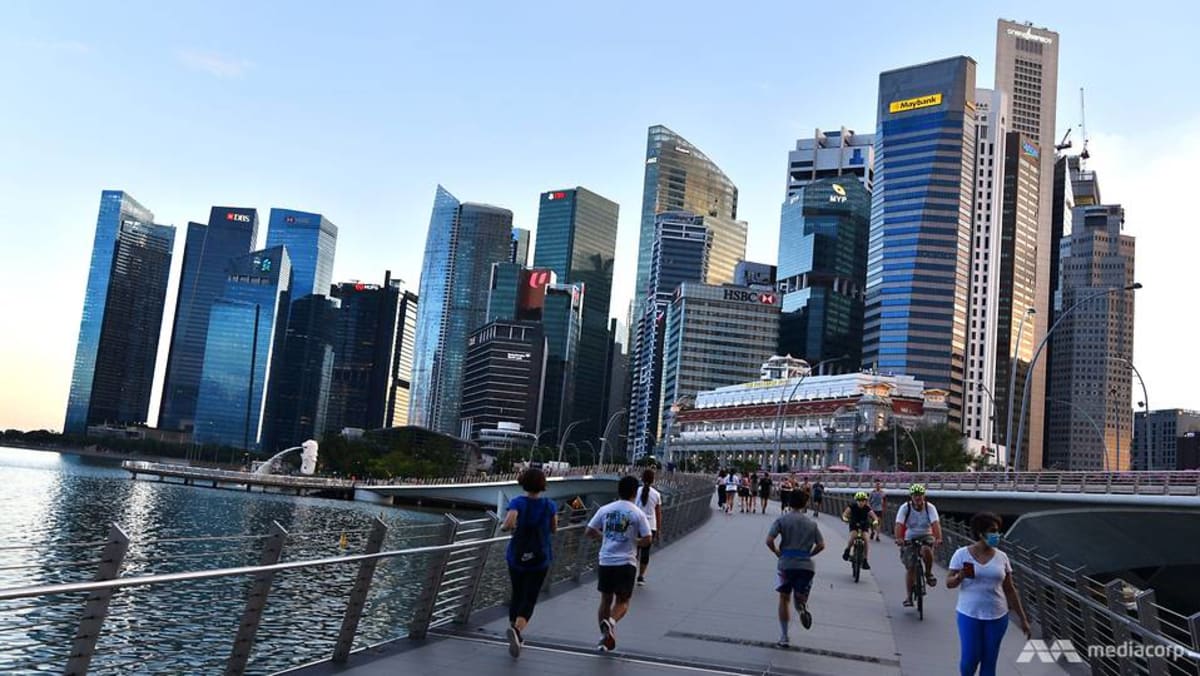 SINGAPORE: Whenever the United States Federal Reserve raises or slashes interest rates in the US, it has a ripple effect across the global economy.
SINGAPORE: Whenever the United States Federal Reserve raises or slashes interest rates in the US, it has a ripple effect across the global economy.
On Mar 16, Fed Chairman Jerome Powell announced the first interest rate hike since 2018 to address the worst inflation that the US has seen in 40 years.It marked the end of almost two years of “easy money policy” and the near-zero interest rates implemented during the pandemic.The central bank also projected six more successive hikes this year .
Could Singapore see a similar upward trend in domestic interest rates, such as the Singapore Overnight Rate Average (SORA)? This comes at a time when worldwide inflationary pressure is intensifying , supply chains are tightening and global demand is weakening, amid countries’ efforts to recover economically from a COVID-19 pandemic that has not seen its end.
In Singapore, an increase in SORA – the main benchmark for floating loan rates in the Singapore dollar – is expected to follow the US rate hike, though not necessarily in lockstep as the magnitude of increase may vary.
This has generally been the case.Previous peaks in US interest rates in 2000, 2006 to 2007 and 2019 saw similar trends in Singapore rates at a smaller scale.
Read: MAS tightens monetary policy in surprise off-cycle move: Why and what it means for you and me Commentary: Why is this inflation so hard to control? Commentary: Central banks are split over hiking interest rates A common trilemma in international monetary policy is this: Monetary autonomy, exchange rate management and free capital mobility.Choose two, as it’s impossible to enjoy all three.Singapore’s approach has been to give up control on the first and manage the latter two options.
What this means is that Singapore doesn’t determine domestic interest rates or the money supply.
Interest rates in Singapore are largely determined by foreign rates, especially those of the US, as well as market expectations of movements in the Singapore dollar.
WHAT HIGHER INTEREST RATES MEAN FOR SINGAPORE HOUSEHOLDS Singapore, like the US, has been in a lower-interest-rate environment since the start of the pandemic to cushion the economic fallout.
Higher interest rates mean that Singapore households will come under greater burden servicing existing debt.
Home owners will find themselves having to set aside more money to repay outstanding mortgages, particularly those with floating loans.
Core inflation in Singapore is also at a near nine-year high, shrinking their real income.
So not only may Singaporeans be forced to cut back on consumption, but what they spend on will also cost more – a double whammy.
The Monetary Authority of Singapore (MAS) is rightly concerned about this, as household debt has risen steadily since 2020.In its annual Financial Stability Review in December 2021, the MAS advised households to carefully assess their ability to meet mortgage obligations and urged borrowers saddled with a heavy debt load not to take on more loans, as it was already anticipating possible rate hikes.
Savers will be pleased, however, as higher interest rates would incentivise households to increase their savings.
Workers at a manufacturing facility in Singapore.(File photo: AFP/Roslan Rahman) Related: The Big Read: With inflation putting the squeeze on families, some give up the frills while others cut back on basics IMPLICATIONS FOR SINGAPORE BUSINESSES For local businesses, the increased cost of borrowing also means challenges in servicing debt on commercial and industrial property loans or taking on new loans.This potentially reduces profit margins and increases the required return on new investment projects.
But the impact may vary across industries.
Sectors dominated by multinational companies, such as manufacturing, are likely less impacted.They often rely on their own financing sources, such as from their overseas headquarters.
Construction firms, on the other hand, may be more affected because they rely to a greater extent on commercial bank loans.Cash flows are tighter due to the longer-term nature of projects.And this comes on the back of having to deal with restrictions on foreign manpower and other cost pressures from the pandemic.
Higher interest rates will likely make things harder for the construction sector.
It has already been trending towards a higher risk of defaulting on repayments.
The non-performing loan ratio of loans to the construction sector rose to 7.3 per cent, compared to 2.1 per cent across all commercial bank loans, in the fourth quarter of 2021.But an Evergrande situation in China is unlikely to be seen in Singapore due to differences in the property market.
Why is the Government raising the GST and what impact will it have on families and businesses? Listen to CNA’s Heart of the Matter:.